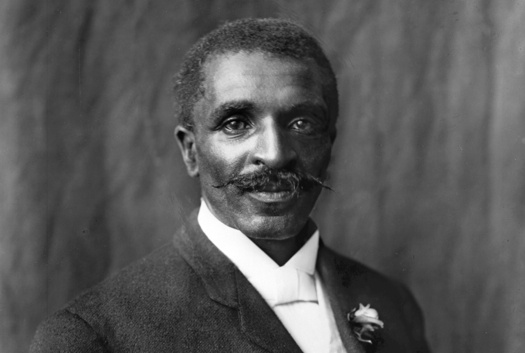A Little More GWC

A few requests for a bit more info on George Washington Carver and his times. I am only too happy to oblige, as he’s one of my very favorite food scientists. As I mentioned, Carver was born into slavery at very the close of the Civil War. He grew up during Reconstruction, a tumultuous and painful time in America during which the South was forced to completely reinvent itself — its society, its culture, its economy…the lot. Agriculturally, the Confederate states had been relying heavily cotton as a cash crop, so much so that little else was actually grown in the South.
The big problem with cotton is that it saps huge amounts of nutrients from the soil. Southern farmers, in their rush to cash in on the cotton boom, either ignored or were unaware of the need to reintroduce nutrients back into the land. The results was that by the war’s end vast tracts of Southern farmland were laid waste.
It was this problem of soil exhaustion that Carver sought to address by championing the peanut. Being a legume, peanut bushes restore precious nitrogen to the soil as they grow. But once you’ve grown peanuts you have to have something do with them, hence Carver’s famous list of 325 peanut-based products, the formulas for which he simply gave away. Of course peanuts aren’t the only crop that can be employed to complete the nitrogen cycle, which is why Carver also invented hundreds of uses for sweet potatoes, soybeans, peas, pecans and others.
Yet for all he did, Carver never became a wealthy man. The way he saw it, his inspirations were gifts from God which meant they to be shared. His epitaph reads: “He could have added fortune to fame, but caring for neither, he found happiness and honor in being helpful to the world.” Amen!
He’s been one of my heroes since elementary school. Love it when you work in some history for us, with all the science & technique (& humor).
Me too, Cath! 😉
Thanks!
– Joe